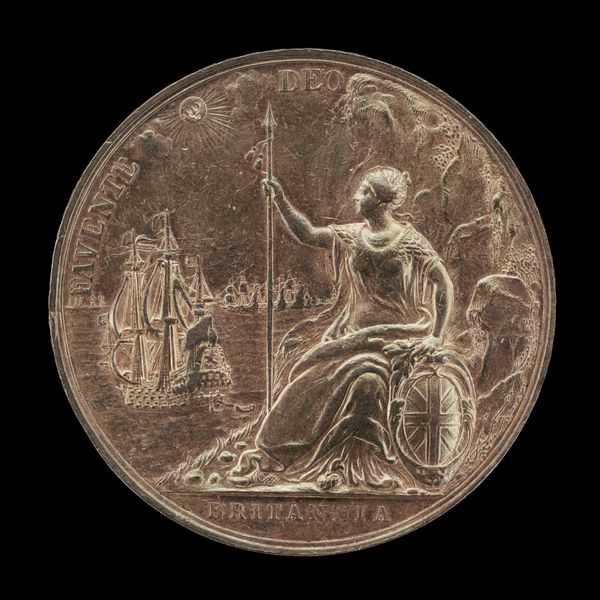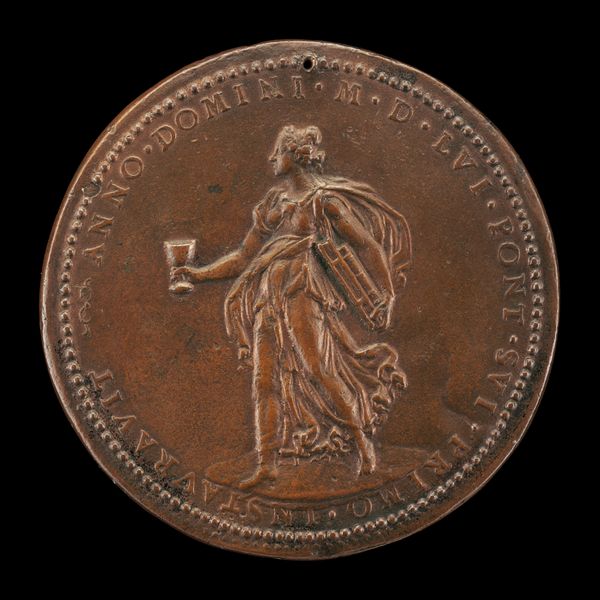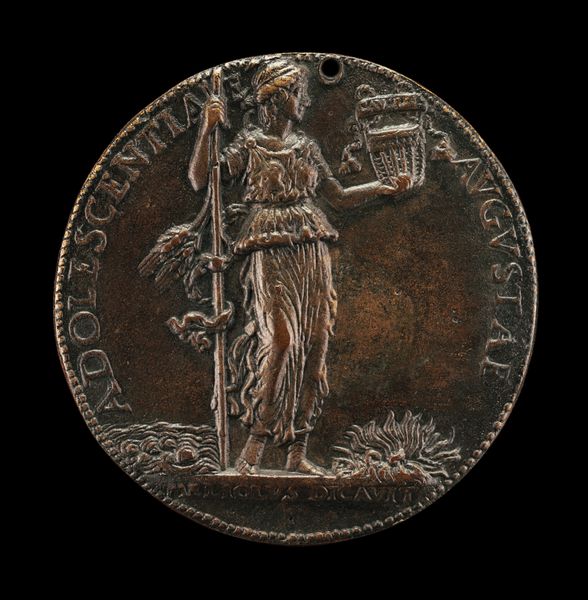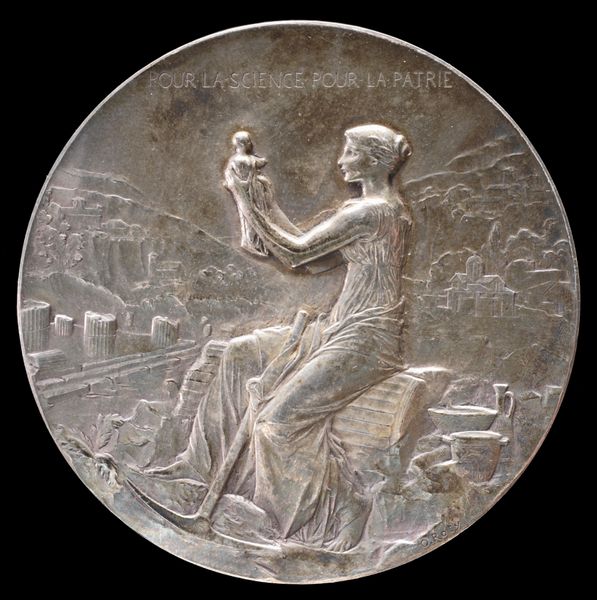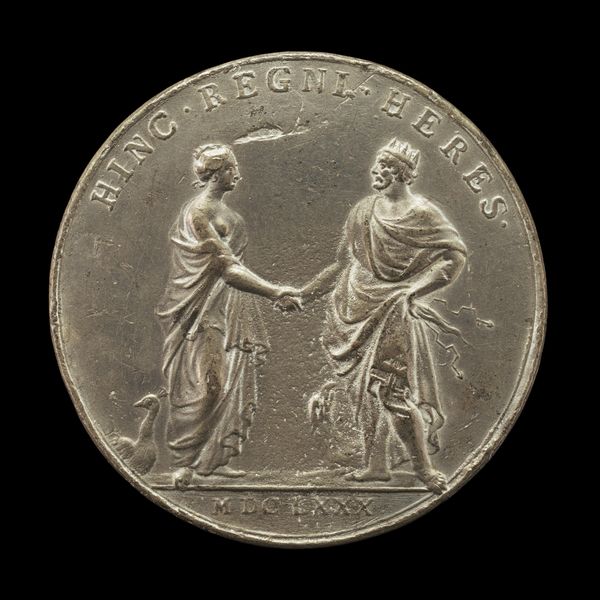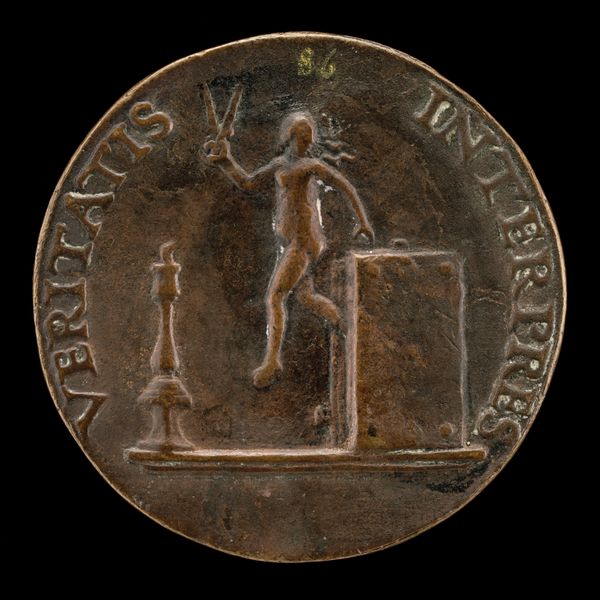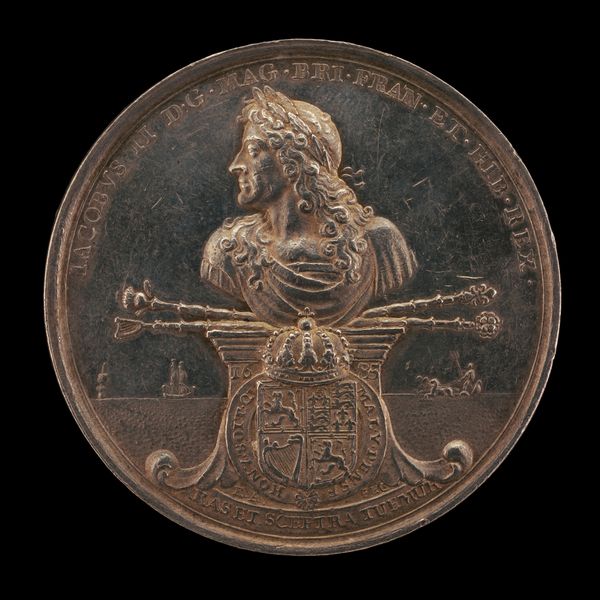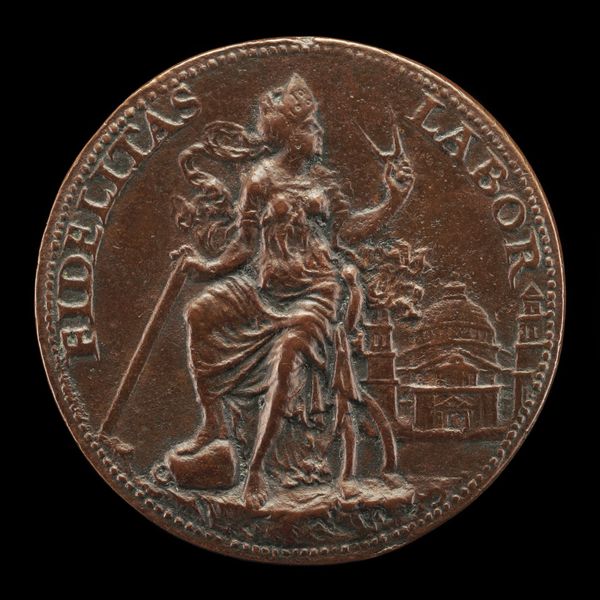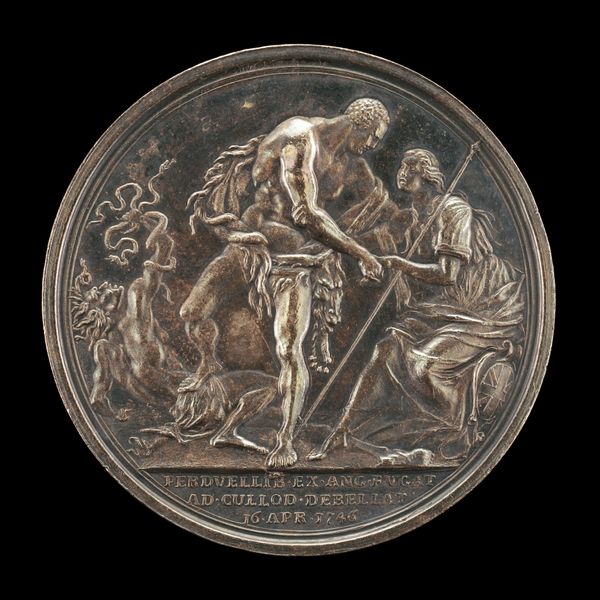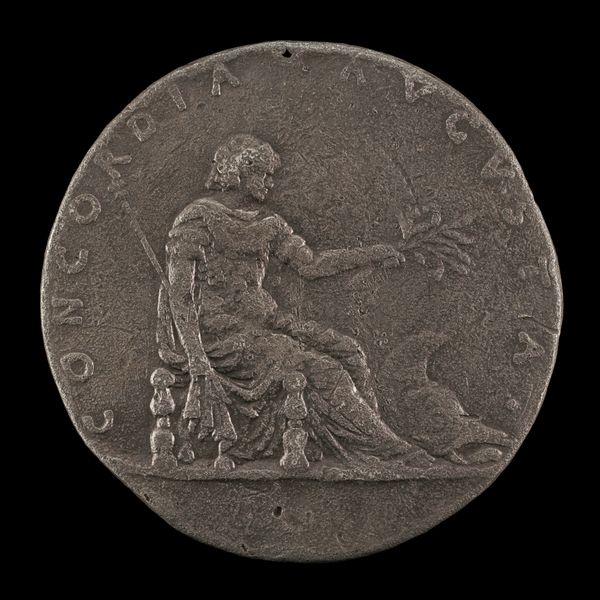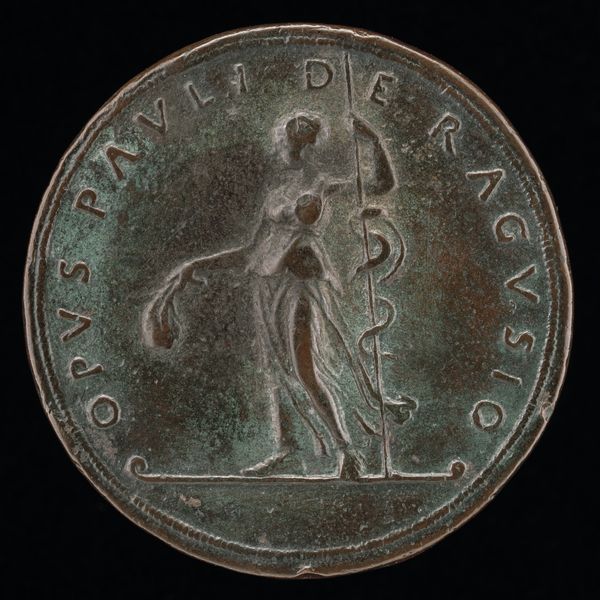![Apollo Belvedere [reverse] by Stefano Passamonti](/_next/image?url=https%3A%2F%2Fd2w8kbdekdi1gv.cloudfront.net%2FeyJidWNrZXQiOiAiYXJ0ZXJhLWltYWdlcy1idWNrZXQiLCAia2V5IjogImFydHdvcmtzLzBlZjRiYjkyLTY2MWYtNGM1Zi1hYzc4LWFkOTIxZTAyODNhNi8wZWY0YmI5Mi02NjFmLTRjNWYtYWM3OC1hZDkyMWUwMjgzYTZfZnVsbC5qcGciLCAiZWRpdHMiOiB7InJlc2l6ZSI6IHsid2lkdGgiOiAxOTIwLCAiaGVpZ2h0IjogMTkyMCwgImZpdCI6ICJpbnNpZGUifX19&w=3840&q=75)
metal, relief, sculpture
#
neoclacissism
#
metal
#
sculpture
#
greek-and-roman-art
#
relief
#
sculpting
#
sculpture
Dimensions: overall (diameter): 6.81 cm (2 11/16 in.) gross weight: 178.22 gr (0.393 lb.) axis: 12:00
Copyright: National Gallery of Art: CC0 1.0
Editor: This is Stefano Passamonti's metal relief, "Apollo Belvedere [reverse]", from 1816. It looks like it's referencing a classical sculpture, but flattened and mirrored on what appears to be a coin or medallion. How does its historical context shape its meaning for you? Curator: Seeing this, I immediately think about the Napoleonic era and its fascination with classical antiquity. The Apollo Belvedere was *the* quintessential image of idealized male beauty. Replicated endlessly, often as a symbol of cultural power. Medals like this one became important tools to broadcast not only artistic tastes, but also political and ideological stances. Editor: So, was this essentially propaganda then? What statement do you think it was trying to make? Curator: Not overtly. Think of it more as cultural capital. By associating themselves with the artistic glories of Greece and Rome, ruling elites sought to legitimize their own authority and project an image of sophistication. The fact that it's a "reverse" tells me that Passamonti wasn't blindly copying the famous original. He's actively engaging with its legacy, perhaps even subverting it slightly. What do you think of the Latin inscription? Editor: It's hard to decipher without closer examination, but my Latin's rusty! Is the text crucial to understanding its public role? Curator: Absolutely! Those inscriptions usually clarify who commissioned the work and what specific event or achievement it commemorates. That information would help contextualize this piece within the specific historical circumstances of its creation. Knowing its patron, location, and public access gives more information about its meaning in early 19th century society. Editor: It’s fascinating how a seemingly straightforward image carries such complex political and cultural weight. Now I see the sculpture's reproduction isn't just about admiring beauty, but more about claiming authority. Curator: Exactly. And by understanding the mechanisms of this appropriation, we gain a deeper insight into the interplay between art, power, and public perception in any given era.
Comments
No comments
Be the first to comment and join the conversation on the ultimate creative platform.
